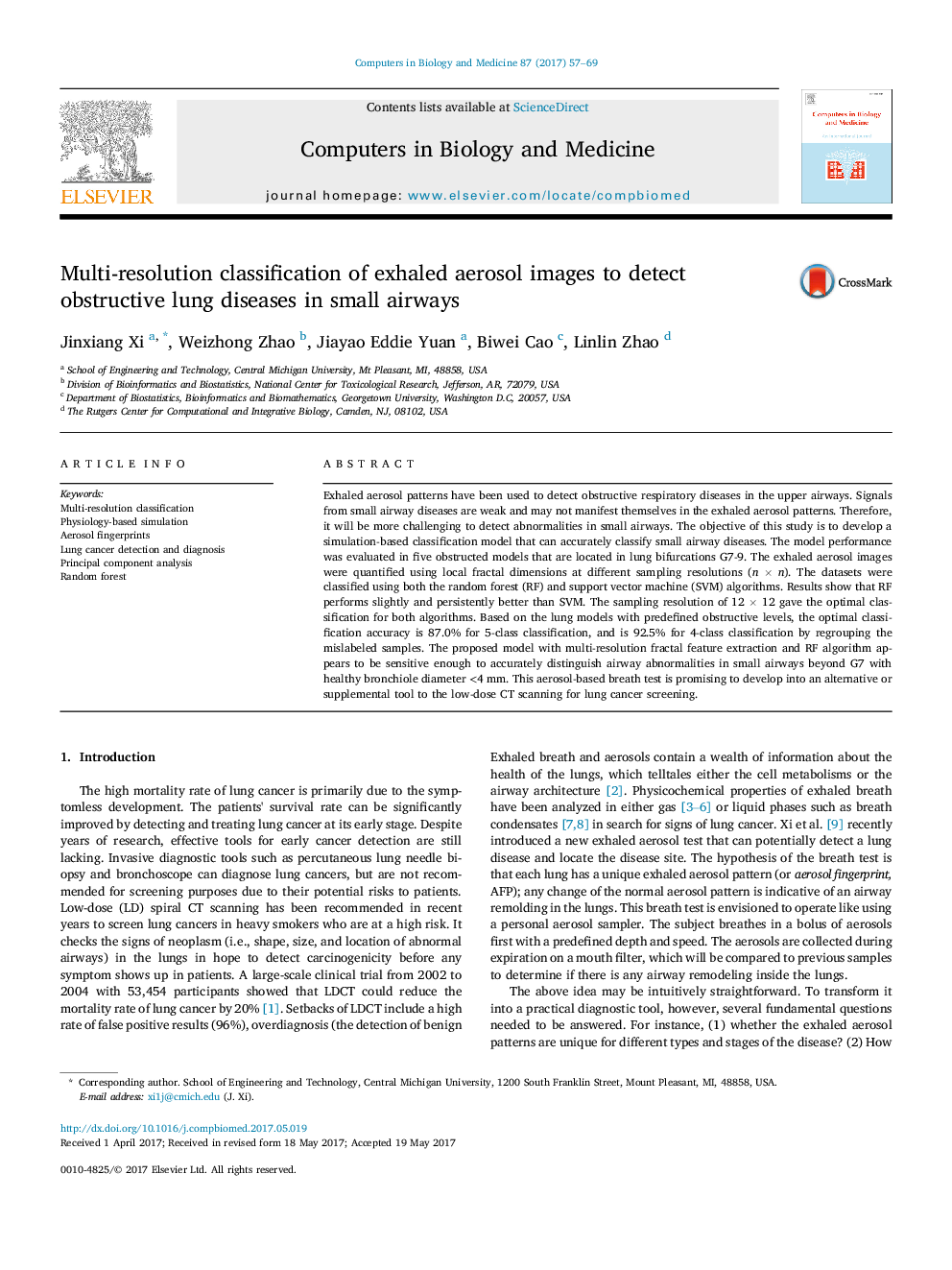| Article ID | Journal | Published Year | Pages | File Type |
|---|---|---|---|---|
| 4964798 | Computers in Biology and Medicine | 2017 | 13 Pages |
Abstract
Symptomless development of the lung cancer makes it highly elusive to be detected at its early stages. This work presents a new diagnostic approach that uses exhaled aerosols to detect obstructive respiratory diseases. The hypothesis was that each lung structure had a signature distribution of exhaled aerosols (termed as aerosol fingerprint, or AFP). The proposed method was demonstrated to be able to detect small structural changes (<1Â mm) in small airways (lung bifurcations G7-9) with a sufficiently high accuracy (92.5%). Compared to standard techniques such as CT, biopsy, and bronchoscope, this new approach has the advantages of being non-invasive, easy to use, and low cost. The proposed aerosol-based breath test shows promise towards the development of an alternative or supplemental tool to the low-dose CT scanning for lung cancer screening.266
Related Topics
Physical Sciences and Engineering
Computer Science
Computer Science Applications
Authors
Jinxiang Xi, Weizhong Zhao, Jiayao Eddie Yuan, Biwei Cao, Linlin Zhao,
